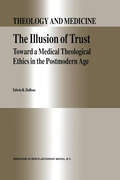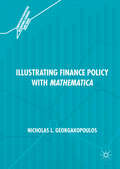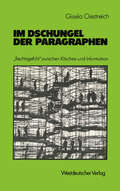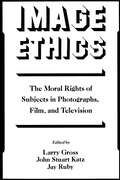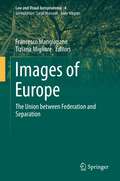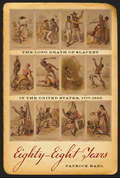- Table View
- List View
The Illusion of Transparency in Corporate Governance: Does Transparency Help or Hinder True Ethical Conduct?
by Finn Janning Wafa Khlif Coral IngleyTransparency is generally seen as a corporate priority and a central attribute for promoting business growth and social morality. From a philosophical perspective, society has experienced a gradual paradigm shift which intensified after the Second World War with the advent of the information era. As a fundamental part of an inescapable, hegemonic capitalist system and given the insistent emphasis on it as a moral imperative, transparency, this book avers, needs to be examined and challenged as to its true governance value in building a sustainable twenty-first century society. Rather than clinging to the fantasy of complete transparency as the only form of accountability, corporate governance is strengthened in this way by practicing true social responsibility, which emerges not from outward-looking compliance but from a deeper place in the corporate psyche through inward-looking contemplation and the development of moral maturity.
The Illusion of Trust: Toward a Medical Theological Ethics in the Postmodern Age (Theology and Medicine #5)
by E.R. DuBoseThis book is about trust and its implications for a medical theological ethics. Beginning with its earliest work, there has been attention to trust running through the bioethics literature in the United States, and much of this discussion has examined its theological elements. Clearly, trust is indispensable when describing the patient-physician relationship, so why is there a need for yet another study? There is no doubt that people generally trust physicians. Traditionally the physician is the patient's fiduciary agent, whose sole obligation is to act only in the patient's best interest. In recent times, however, there is a perception on the part of people within and without health care that physicians have other obligations that compete with their obligation to the patient. If we acknowledge that one price for the successes of technological biomedicine is high in terms of financial cost, another price of Sllccess seems to be distrust, cynicism, and suspicion directed by the public toward the medical profes sion. If this uneasiness is the price society pays for medical success, what is the price of success for the doctor? Because of their role within the social order, physicians have claimed and been granted autonomy, authority, and special status. In return, the profes sion has pledged to serve the well-being and interests of humankind. This fiduciary commitment becomes a taken-for-granted aspect of the physician's identity, both for the physician for whom this dedication is definitional and for the public which expects trustworthy service from this person.
The Illusion of Well-Being: Economic Policymaking Based on Respect and Responsiveness
by Mark D. WhiteThe use of measures of economic output to guide policymaking has been criticized for decades because of their weak ties to human well-being. Recently, many scholars and politicians have called for measures of happiness or subjective well-being to be used to guide policy in people's true interests. In The Illusion of Well-Being, Mark D. White explains why using happiness as a tool for policymaking is misguided and unethical. Happiness is too vague a term to define, and too general a concept, to measure in a way that captures people's true feelings. He extends this critique to well-being in general and concludes that no measure of well-being can do justice to people's true interests, which are complex, multifaceted, and subjective. White suggests instead that policymaking be conducted according to respect and responsiveness, promoting the true interests of citizens while addressing their real needs, and devoting government resources to where they can do the most good.
Illustrated Dictionary of Cargo Handling
by Peter BrodieNow in its fourth edition, this illustrated dictionary gives readers a visual representation of all elements of maritime transport which relate to the handling and movement of cargo. This is particularly for the benefit of shore-based personnel who often do not get the opportunity to see first-hand how the cargoes they are working on are handled and moved. The book covers: every major commodity how it is loaded how it is discharged what equipment is used to handle and store it any specialised terminal required This new edition not only includes many new definitions, it also benefits from several photographic sequences showing cargo loading and discharging processes in action from start to finish. This book is a valuable reference to any professionals working in the shipping and cargo handling industry.
Illustrated Dictionary of Cargo Handling
by Peter BrodieNow in its fourth edition, this illustrated dictionary gives readers a visual representation of all elements of maritime transport which relate to the handling and movement of cargo. This is particularly for the benefit of shore-based personnel who often do not get the opportunity to see first-hand how the cargoes they are working on are handled and moved. The book covers: every major commodity how it is loaded how it is discharged what equipment is used to handle and store it any specialised terminal required This new edition not only includes many new definitions, it also benefits from several photographic sequences showing cargo loading and discharging processes in action from start to finish. This book is a valuable reference to any professionals working in the shipping and cargo handling industry.
Illustrated Guide to Crlme Scene Investigation
by Nicholas Petraco Hal ShermanYou are the first to arrive at the scene. You secure the area, and record what the human eye can see so far. You begin your search. You come across what appears to be physical evidence, and proceed to carefully document, package, and transport it to the lab. You fill out the routine paperwork, and feel secure in the knowledge that you have done eve
Illustrating Finance Policy with Mathematica (Quantitative Perspectives on Behavioral Economics and Finance)
by Nicholas L. GeorgakopoulosStudents in various disciplines—from law and government to business and health policy—need to understand several quantitative aspects of finance (such as the capital asset pricing model or financial options) and policy analysis (e.g., assessing the weight of probabilistic evidence) but often have little quantitative background. This book illustrates those phenomena and explains how to illustrate them using the powerful visuals that computing can produce. Of particular interest to graduate students and scholars in need of sharper quantitative methods, this book introduces the reader to Mathematica, enables readers to use Mathematica to produce their own illustrations, and places specific emphasis on finance and policy as well as the foundations of probability theory.
Illustrating Finance Policy with Mathematica (Quantitative Perspectives on Behavioral Economics and Finance)
by Nicholas L. GeorgakopoulosStudents in various disciplines—from law and government to business and health policy—need to understand several quantitative aspects of finance (such as the capital asset pricing model or financial options) and policy analysis (e.g., assessing the weight of probabilistic evidence) but often have little quantitative background. This book illustrates those phenomena and explains how to illustrate them using the powerful visuals that computing can produce. Of particular interest to graduate students and scholars in need of sharper quantitative methods, this book introduces the reader to Mathematica, enables readers to use Mathematica to produce their own illustrations, and places specific emphasis on finance and policy as well as the foundations of probability theory.
Ilse Koch on Trial: Making the “Bitch of Buchenwald”
by Tomaz JardimAn authoritative reassessment of one of the Third Reich’s most notorious war criminals, whose alleged sexual barbarism made her a convenient scapegoat and obscured the true nature of Nazi terror.On September 1, 1967, one of the Third Reich’s most infamous figures hanged herself in her cell after nearly twenty-four years in prison. Known as the “Bitch of Buchenwald,” Ilse Koch was singularly notorious, having been accused of owning lampshades fabricated from skins of murdered camp inmates and engaging in “bestial” sexual behavior. These allegations fueled a public fascination that turned Koch into a household name and the foremost symbol of Nazi savagery. Her subsequent prosecution resulted in a scandal that prompted US Senate hearings and even the intervention of President Truman.Yet the most sensational atrocities attributed to Koch were apocryphal or unproven. In this authoritative reappraisal, Tomaz Jardim shows that, while Koch was guilty of heinous crimes, she also became a scapegoat for postwar Germans eager to distance themselves from the Nazi past. The popular condemnation of Koch—and the particularly perverse crimes attributed to her by prosecutors, the media, and the public at large—diverted attention from the far more consequential but less sensational complicity of millions of ordinary Germans in the Third Reich’s crimes.Ilse Koch on Trial reveals how gendered perceptions of violence and culpability drove Koch’s zealous prosecution at a time when male Nazi perpetrators responsible for greater crimes often escaped punishment or received lighter sentences. Both in the international press and during her three criminal trials, Koch was condemned for her violation of accepted gender norms and “good womanly behavior.” Koch’s “sexual barbarism,” though treated as an emblem of the Third Reich’s depravity, ultimately obscured the bureaucratized terror of the Nazi state and hampered understanding of the Holocaust.
Im Dienste der Gerechtigkeit: Festschrift für Franz Bydlinski
Franz Bydlinski hat die Rechtswissenschaft durch viele Jahrzehnte hindurch wie kaum ein anderer geprägt. Dieser Band entstand aus Anlass seines 70. Geburtstags und spiegelt die Reichweite und die Nachhaltigkeit seines fachlichen Einflusses auf mehrere Generationen von namhaften Wissenschaftlern im In- und Ausland eindrucksvoll wider. Der thematische Bogen der Beiträge spannt sich von grundlegenden rechtstheoretischen und rechtsethischen Fragen bis hin zu zahlreichen dogmatischen Einzelfragen des Zivilrechts. Die aufgenommenen Arbeiten sind in ihrer Gesamtheit nicht nur ein öffentliches Zeichen der Wertschätzung für eine herausragende Wissenschaftlerpersönlichkeit, sie bieten auch eine spannende Lektüre zu aktuellen Problemen auf höchstem Niveau.
Image Analysis and Recognition: 15th International Conference, ICIAR 2018, Póvoa de Varzim, Portugal, June 27–29, 2018, Proceedings (Lecture Notes in Computer Science #10882)
by Aurélio Campilho Fakhri Karray Bart ter Haar RomenyThis book constitutes the thoroughly refereed proceedings of the 15th International Conference on Image Analysis and Recognition, ICIAR 2018, held in Póvoa de Varzim, Portugal, in June 2018.The 91 full papers presented together with 15 short papers were carefully reviewed and selected from 179 submissions. The papers are organized in the following topical sections: Enhancement, Restoration and Reconstruction, Image Segmentation, Detection, Classication and Recognition, Indexing and Retrieval, Computer Vision, Activity Recognition, Traffic and Surveillance, Applications, Biomedical Image Analysis, Diagnosis and Screening of Ophthalmic Diseases, and Challenge on Breast Cancer Histology Images.
Image-Based Evidence in International Criminal Prosecutions: Charting a Path Forward
by Jonathan W. HakThe use of image-based evidence in international criminal prosecutions is at a tipping point. In his pioneering book on the topic, Jonathan W. Hak, KC provides critical insight into the authentication and interpretation of images, setting out how images can be effectively used in the search for the truth. While images can convey vital information more efficiently and effectively than words alone, the biases of photographers, the use of image-altering technology, and the generation of images with artificial intelligence can lead to mischief and injustice. In this context, images must be effectively authenticated and interpreted to establish their true meaning. Addressing the growing need for visual literacy, Jonathan W. Hak's Image-Based Evidence in International Criminal Prosecutions systematically explores the value of images as probative and didactic evidence in international criminal law. It analyses existing challenges in the creation, acquisition, processing, and use of image-based evidence, making recommendations for how those challenges might be addressed. In particular, the book investigates emerging technical frontiers in image-based evidence and the potential uses for advanced visual representations like virtual reality, immersive virtual environments, and augmented reality. Ultimately, the book argues that advanced visual representations may have sufficient probative value and proposes cautious parameters for their application in the international courtroom. An essential resource for anyone working with image-based evidence, the book offers significant guidance, relevant legal and technical detail, and recommendations for the use of image-based evidence in investigations and the courtroom.
Image-Based Evidence in International Criminal Prosecutions: Charting a Path Forward
by Jonathan W. HakThe use of image-based evidence in international criminal prosecutions is at a tipping point. In his pioneering book on the topic, Jonathan W. Hak, KC provides critical insight into the authentication and interpretation of images, setting out how images can be effectively used in the search for the truth. While images can convey vital information more efficiently and effectively than words alone, the biases of photographers, the use of image-altering technology, and the generation of images with artificial intelligence can lead to mischief and injustice. In this context, images must be effectively authenticated and interpreted to establish their true meaning. Addressing the growing need for visual literacy, Jonathan W. Hak's Image-Based Evidence in International Criminal Prosecutions systematically explores the value of images as probative and didactic evidence in international criminal law. It analyses existing challenges in the creation, acquisition, processing, and use of image-based evidence, making recommendations for how those challenges might be addressed. In particular, the book investigates emerging technical frontiers in image-based evidence and the potential uses for advanced visual representations like virtual reality, immersive virtual environments, and augmented reality. Ultimately, the book argues that advanced visual representations may have sufficient probative value and proposes cautious parameters for their application in the international courtroom. An essential resource for anyone working with image-based evidence, the book offers significant guidance, relevant legal and technical detail, and recommendations for the use of image-based evidence in investigations and the courtroom.
The Image before the Weapon: A Critical History of the Distinction between Combatant and Civilian
by Helen M. KinsellaSince at least the Middle Ages, the laws of war have distinguished between combatants and civilians under an injunction now formally known as the principle of distinction. The principle of distinction is invoked in contemporary conflicts as if there were an unmistakable and sure distinction to be made between combatant and civilian. As is so brutally evident in armed conflicts, it is precisely the distinction between civilian and combatant, upon which the protection of civilians is founded, cannot be taken as self-evident or stable. Helen M. Kinsella documents that the history of international humanitarian law itself admits the difficulty of such a distinction. In The Image before the Weapon, Kinsella explores the evolution of the concept of the civilian and how it has been applied in warfare. A series of discourses—including gender, innocence, and civilization—have shaped the legal, military, and historical understandings of the civilian and she documents how these discourses converge at particular junctures to demarcate the difference between civilian and combatant. Engaging with works on the law of war from the earliest thinkers in the Western tradition, including St. Thomas Aquinas and Christine de Pisan, to contemporary figures such as James Turner Johnson and Michael Walzer, Kinsella identifies the foundational ambiguities and inconsistencies in the principle of distinction, as well as the significant role played by Christian concepts of mercy and charity. She then turns to the definition and treatment of civilians in specific armed conflicts: the American Civil War and the U.S.-Indian wars of the nineteenth century, and the civil wars of Guatemala and El Salvador in the 1980s. Finally, she analyzes the two modern treaties most influential for the principle of distinction: the 1949 IV Geneva Convention Relative to the Protection of Civilian Persons in Times of War and the 1977 Protocols Additional to the 1949 Conventions, which for the first time formally defined the civilian within international law. She shows how the experiences of the two world wars, but particularly World War II, and the Algerian war of independence affected these subsequent codifications of the laws of war.As recognition grows that compliance with the principle of distinction to limit violence against civilians depends on a firmer grasp of its legal, political, and historical evolution, The Image before the Weapon is a timely intervention in debates about how best to protect civilian populations.
Image Ethics: The Moral Rights of Subjects in Photographs, Film, and Television (Communication and Society)
by Larry Gross John Stuart Katz Jay RubyThis pathbreaking collection of thirteen original essays examines the moral rights of the subjects of documentary film, photography, and television. Image makers--photographers and filmmakers--are coming under increasing criticism for presenting images of people that are considered intrusive and embarrassing to the subject. Portraying subjects in a "false light," appropriating their images, and failing to secure "informed consent" are all practices that intensify the debate between advocates of the right to privacy and the public's right to know. Discussing these questions from a variety of perspectives, the authors here explore such issues as informed consent, the "right" of individuals and minority groups to be represented fairly and accurately, the right of individuals to profit from their own image, and the peculiar moral obligations of minorities who image themselves and the producers of autobiographical documentaries. The book includes a series of provocative case studies on: the documentaries of Frederick Wiseman, particularly Titicut Follies; British documentaries of the 1930s; the libel suit of General Westmoreland against CBS News; the film Witness and its portrayal of the Amish; the film The Gods Must be Crazy and its portrayal of the San people of southern Africa; and the treatment of Arabs and gays on television. The first book to explore the moral issues peculiar to the production of visual images, Image Ethics will interest a wide range of general readers and students and specialists in film and television production, photography, communications, media, and the social sciences.
Images in Law
by William PencakWhat does 'the law' look like? While numerous attempts have been made to examine law and legal action in terms of its language, little has yet been written that considers how visual images of the law influence its interpretation and execution in ways not discernible from written texts. This groundbreaking collection focuses on images in law, featuring contributions that show and discuss the perception of the legal universe on a theoretical basis or when dealing with visual semiotics (dress, ceremony, technology, etc.). It also examines 'language in action', analyzing jury instructions, police directives, and how imagery is used in conjunction with contentious social and political issues within a country, such as the image of family in Ireland or the image of racism in France.
Images in Law
by William PencakWhat does 'the law' look like? While numerous attempts have been made to examine law and legal action in terms of its language, little has yet been written that considers how visual images of the law influence its interpretation and execution in ways not discernible from written texts. This groundbreaking collection focuses on images in law, featuring contributions that show and discuss the perception of the legal universe on a theoretical basis or when dealing with visual semiotics (dress, ceremony, technology, etc.). It also examines 'language in action', analyzing jury instructions, police directives, and how imagery is used in conjunction with contentious social and political issues within a country, such as the image of family in Ireland or the image of racism in France.
Images of a Constitution (Routledge Revivals)
by William E. ConklinOriginally published in 1989, in this remarkable conjunction of constitutional theory, jurisprudence, literary theory, constitutional law, and political theory, William Conklin first tells us what a constitution is not: it is not a text, nor a compendium of judicial and legislative decisions interpreting a text, nor a set of doctrines, nor moral/political values, nor customs, nor a priori conceptions. A constitution, he argues, is an image which exists through the legal consciousness of a community.Using a wide range of Canadian judicial decisions as examples, Conklin shows that the classic cases have been those where the boundaries of two conflicting images clashed. In each instance, the subject-matter itself collapses into a search for a coherent image of what a constitution is all about.The dominant image of a constitution in Canadian judicial discourse has been a rationalist one emanating from the Enlightenment understanding of knowledge. Turning to academic writings on Canadian federalism law, Conklin goes on to identify clearly the boundaries of three versions of rationalism, and to show that Canadian scholars have shared with judges the dominant image of rationalism.In the third part of his essay, the author makes a prescriptive claim, namely that a text such as the Canadian Charter of Rights and Freedoms arguably raises issues which the rationalist image of a constitution precludes as legitimate inquiries. He identifies a further general image of a constitution in Canadian legal discourse, a teleological one which is rooted in the writings and judgments of Ivan Rand. Finally, he uses the contours of the Rand image to work out a further image of constitution, an image that allows lawyers to entertain issues of both theory and social/cultural practice, thereby placing them in a position to alleviate the pain and suffering of those in need.
Images of a Constitution (Routledge Revivals)
by William E. ConklinOriginally published in 1989, in this remarkable conjunction of constitutional theory, jurisprudence, literary theory, constitutional law, and political theory, William Conklin first tells us what a constitution is not: it is not a text, nor a compendium of judicial and legislative decisions interpreting a text, nor a set of doctrines, nor moral/political values, nor customs, nor a priori conceptions. A constitution, he argues, is an image which exists through the legal consciousness of a community.Using a wide range of Canadian judicial decisions as examples, Conklin shows that the classic cases have been those where the boundaries of two conflicting images clashed. In each instance, the subject-matter itself collapses into a search for a coherent image of what a constitution is all about.The dominant image of a constitution in Canadian judicial discourse has been a rationalist one emanating from the Enlightenment understanding of knowledge. Turning to academic writings on Canadian federalism law, Conklin goes on to identify clearly the boundaries of three versions of rationalism, and to show that Canadian scholars have shared with judges the dominant image of rationalism.In the third part of his essay, the author makes a prescriptive claim, namely that a text such as the Canadian Charter of Rights and Freedoms arguably raises issues which the rationalist image of a constitution precludes as legitimate inquiries. He identifies a further general image of a constitution in Canadian legal discourse, a teleological one which is rooted in the writings and judgments of Ivan Rand. Finally, he uses the contours of the Rand image to work out a further image of constitution, an image that allows lawyers to entertain issues of both theory and social/cultural practice, thereby placing them in a position to alleviate the pain and suffering of those in need.
Images of a Free Press
by Lee C. BollingerRich in historical detail, Images of a Free Press is an elegant, powerful guide to the evolution of our modern conception of freedom of the press, which finds expression in laws that protect print journalism and regulate broadcast media. Bollinger argues that this distinction remains meaningful but he advocates a more sophisticated approach to issues of privacy, access, and technology. Providing concrete guidelines for improving media laws, Images of a Free Press is a vital First Amendment primer for lawyers, media professionals, and critics, and all concerned citizens. "Images of a Free Press is the natural sequel to Lee Bollinger's first book, The Tolerant Society, and is destined to become a standard in first amendment scholarship."—Rodney A. Smolla, Constitutional Commentary "Revisiting themes he first explored some fifteen years ago, Bollinger now adds further to our understanding of the complex relationship among the First Amendment, the Supreme Court, the public, the press and the democratic process. This is a work of insight, sensitivity, and power. Bollinger has a profound knowledge of and a deep affection for his subject, and it shows."—Geoffrey R. Stone, Michigan Law Review "This thoughtful, understated book remains a call to come join the town meeting and hammer out some new rules of order. Scholars and citizens alike could do well to read Bollinger's book and accept his challenge."—Yale Law Review "For a number of years, Lee Bollinger has argued that the First Amendment has been applied differently to the print media than it has been to the broadcast media. In his new book, Images of a Free Press, Bollinger provides a concise, persuasive account of why this is so—and why it ought to be so."—Columbia Law Review
Images of Europe: The Union between Federation and Separation (Law and Visual Jurisprudence #4)
by Francesco Mangiapane Tiziana MiglioreThis book deals with the fundamental semantics of images of Europe, which consist of valences, mirror beliefs and affectivities. This is why it relaunches the importance of the European discourse in its symbolic dimension. As such, it explores the many images of Europe, or rather the many images through which European discourse is actually constituted in daily life, in search of their enunciative responsibility in today’s world for determining the current “State of the Union”. The identity of the European continent is based on a millenary tension between universalism and particularism: images of Europe have in fact been alternately inspired, over the centuries, by a model of homogeneity – Roman and Carolingian imperial disposition – on the one hand, and by a model of fragmentation – a Europe of city-states, municipalities, regions and small fatherlands – on the other. In the European Union, a political and economic organism, this issue has recently been amplified to the point that it has reentered public debate, and political parties that are only recognizable for being Europeanists or anti-Europeanists are now ubiquitous. In this regard, one major bone of contention is how to portray the quintessential aspects of the European territory, which are either interpreted as “thresholds” to be overcome in the name of a model of United Europe – “integral totality” – or are instead regarded as insurmountable obstacles for a Europe that is irreparably and perhaps, according to anti-Europeanists, fortunately fragmented – “partitive totality”. Further, this is to be done without excluding the possibility of contradictory and complementary solutions to these binary visions. In this context the book analyzes various texts in order to obtain a more precise picture of the clash, reveal its semiotic forms, and by doing so, identify a way out of the crisis.
The Images of the Consumer in EU Law: Legislation, Free Movement and Competition Law
by Dorota Leczykiewicz Stephen WeatherillThis book consists of contributions exploring from different perspectives the 'images' of the consumer in EU law. The images of the consumer form the foundation for various EU policies, more or less directly oriented towards the goal of consumer protection. The purpose of the volume is to establish what visions of the consumer there are in different contexts of EU law, whether they are consistent, and whether EU law's engagement with consumer-related considerations is sincere or merely instrumental to the achievement of other goals. The chapters discuss how consumers should be protected in EU contract, competition, free movement and trade mark law. They reflect on the limits of the consumer empowerment rationale as the basis for EU consumer policy. The chapters look also at the variety of concerns consumers might have, including the cost of goods and services, access to credit, ethical questions of consumption, the challenges of excessive choice and the possibility to influence the content of regulatory measures, and explore the significance of these issues for the EU's legislative and judicial process.
The Images of the Consumer in EU Law: Legislation, Free Movement and Competition Law (Studies Of The Oxford Institute Of European And Comparative Law Ser. #21)
by Stephen Weatherill Dorota LeczykiewiczThis book consists of contributions exploring from different perspectives the 'images' of the consumer in EU law. The images of the consumer form the foundation for various EU policies, more or less directly oriented towards the goal of consumer protection. The purpose of the volume is to establish what visions of the consumer there are in different contexts of EU law, whether they are consistent, and whether EU law's engagement with consumer-related considerations is sincere or merely instrumental to the achievement of other goals. The chapters discuss how consumers should be protected in EU contract, competition, free movement and trade mark law. They reflect on the limits of the consumer empowerment rationale as the basis for EU consumer policy. The chapters look also at the variety of concerns consumers might have, including the cost of goods and services, access to credit, ethical questions of consumption, the challenges of excessive choice and the possibility to influence the content of regulatory measures, and explore the significance of these issues for the EU's legislative and judicial process.
Imaginary Boundaries of Justice: Social and Legal Justice across Disciplines (Oñati International Series in Law and Society)
by Ronnie LippensIt has become increasingly difficult to speak or even think social or legal justice in an age when words have left their moorings. Perhaps images are more stable than words; maybe images and imagery possess a certain viscosity,even a sensory quality, which prevents them from evaporating. This 'maybe' is what this book is about. The contributors to this collection explore the issue of how the Imaginary (images, imagery, imagination) has a role in the production and reproduction of 'visions' of legal and social justice. It argues that 'visions' of justice are inevitably bounded. Boundaries of 'visions' of justice, however, are also 'imaginary'. They emerge within imaginary spaces, and, as they are 'imaginary', they are inherently unstable. The book captures an emerging interest (in the humanities and social sciences) in images and the visual, or the Imaginary more broadly. This collection will appeal to scholars and students of social and legal theory, visual culture, justice and governance studies, media studies, and criminology.

